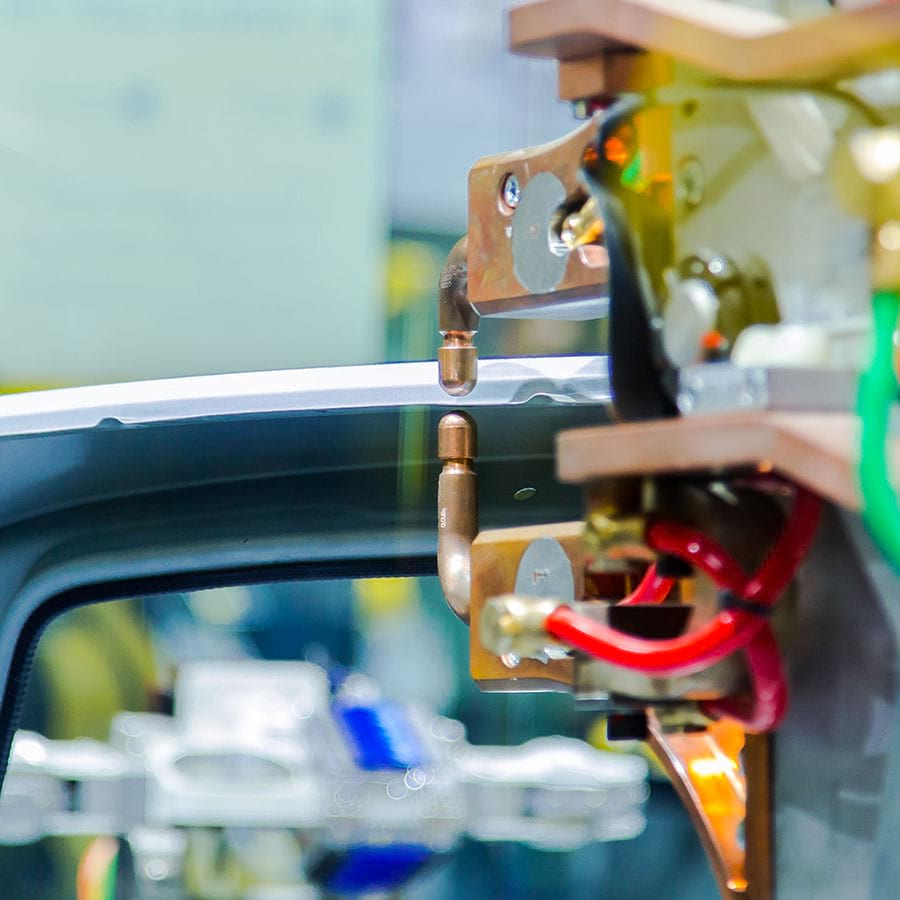Automotive Manufacturing
Optimize production and processes effectively
Asset performance management (APM) is key for automotive manufacturers to reliably manufacture at the highest standard and the lowest cost. This goes beyond simply having the equipment available, it includes keeping the equipment on the line in optimal condition.
Manufacturing in the automotive industry rests upon three pillars: quality, profit, and safety. Balancing these elements to produce components that meet increasing consumer demands is a key consideration for competitiveness.
HxGN EAM offers automated traceability and asset management processes that contribute to justifying consumer trust.
World-class asset management
- Keep manufacturing facilities operating safely, efficiently, and within specifications
- Offer full traceability over the entirety of the asset lifecycle
- Monitor and reduce energy waste
- Increase labor efficiency
- Improve regulatory compliance
- Enhance warranty claim management
- Use preventive and condition-based maintenance processes for a complete smart factory solution

Benefits of asset performance management
In the high-octane environment of automotive manufacturing, extra precautions are needed to make sure production equipment is running at optimal efficiency.
Traceability
One of the key challenges today is having full traceability in automotive manufacturing. From parts to historical data, the management of this enormous data is required and regulated. With APM, your asset and maintenance traceability compliance issues are solved.
Spare Parts & Consumables
Many organizations keep extra materials on hand but stockpiling spare parts may not be a wise practice. Extra materials can degrade over time. HxGN EAM enables organizations to identify key components to have on hand and which ones aren’t needed—reducing the overall cost of inventory.
Internet of Things (IoT)
Real-time analytics, multiple technologies, machine learning, commodity sensors, and embedded systems have all contributed to evolution of “things”. Automated asset and situation management enables IoT to be used for industrial applications and smart manufacturing.
Efficiency
Efficiency is more than just throughput. It is about sustaining optimal throughput. By monitoring energy usage, managing waste, and incorporating modern preventive and conditional maintenance processes, your efficiency will be long-lasting.
Budgeting
All organizations want to create accurate budgets. When it comes to asset management in high-end production facilities, precision budgeting means predicting what assets the organization will need to purchase or replace given operating conditions and business conditions.
Data Management
Enterprise asset management software enables organizations to capture large amounts of data. Automated analytics and reporting help managers capture the essence of the data immediately, shorten the decision process, and enable data-based decision-making.
Doing business in the automotive sector?
If you want to discover HxGN EAM for the automotive manufacturing industry, send us a message.

Key Features
Traceability. HxGN EAM allows maintenance supervisors and technicians to immediately view full historical data, complete with documentation and specifications. With the help of the native mobile app, all this information can be accessed from a tablet or mobile device as well, making audits and inspections available at your fingertips.
Energy optimization. HxGN EAM allows you to establish and monitor a corporate energy strategy by benchmarking, monitoring, comparing energy performance of your assets while eliminating wasteful spending.
Facilities management tools. The manufacturing facility itself is an asset. HxGN EAM contains strong facilities management tools that help reduce costs, lessen downtime and risk, while increasing compliance, reliability, and customer satisfaction.
Four key capabilities of HxGN EAM in Automotive OEM
Real-time condition data
Almost all of today’s automotive manufacturing and assembly machines are connected to control systems through real-time sensors that show the condition of a part or component at any point in the manufacturing process.
Combining these measurements with asset data and work history data provide a framework for triggering work orders that direct maintenance teams to fix equipment before it fails in order to avoid compromising throughput.
Asset registry
The asset registry tracks metadata, the position of the equipment in the manufacturing line, and real-time data about the asset. Metadata also includes information about stock levels, serial numbers, historical data, and more.
The asset registry is the heart of the EAM system. It serves as the central digital source for information about all assets that are critical to organizational efficiency.
Work history
Most organizations rely on OEM specifications to perform preventive maintenance tasks, but that is not always the most efficient method.
By tracking work orders, maintaining a real-world history of what happened to assets, organizations can better predict failure and proactively maintain assets. Root cause analysis provides valuable information that helps establish a reliability centered maintenance program.
Modeling analytics and connectivity
Analytics enable organizations to take asset registry, work order, and sensor data to predict what might happen in the future under similar circumstances.
For example, an automotive manufacturer can simulate how the asset would respond to urgent heavy usage to meet production demands and calculate the additional costs associated with maintenance necessary to keep the machine running at optimal efficiency.
Resources
Best Practice Guide
Why enterprise asset management strategy must evolve into asset performance management
White Paper
Four key considerations for adopting an asset investment planning strategy
Guide
Turn asset management into a competitive advantage







